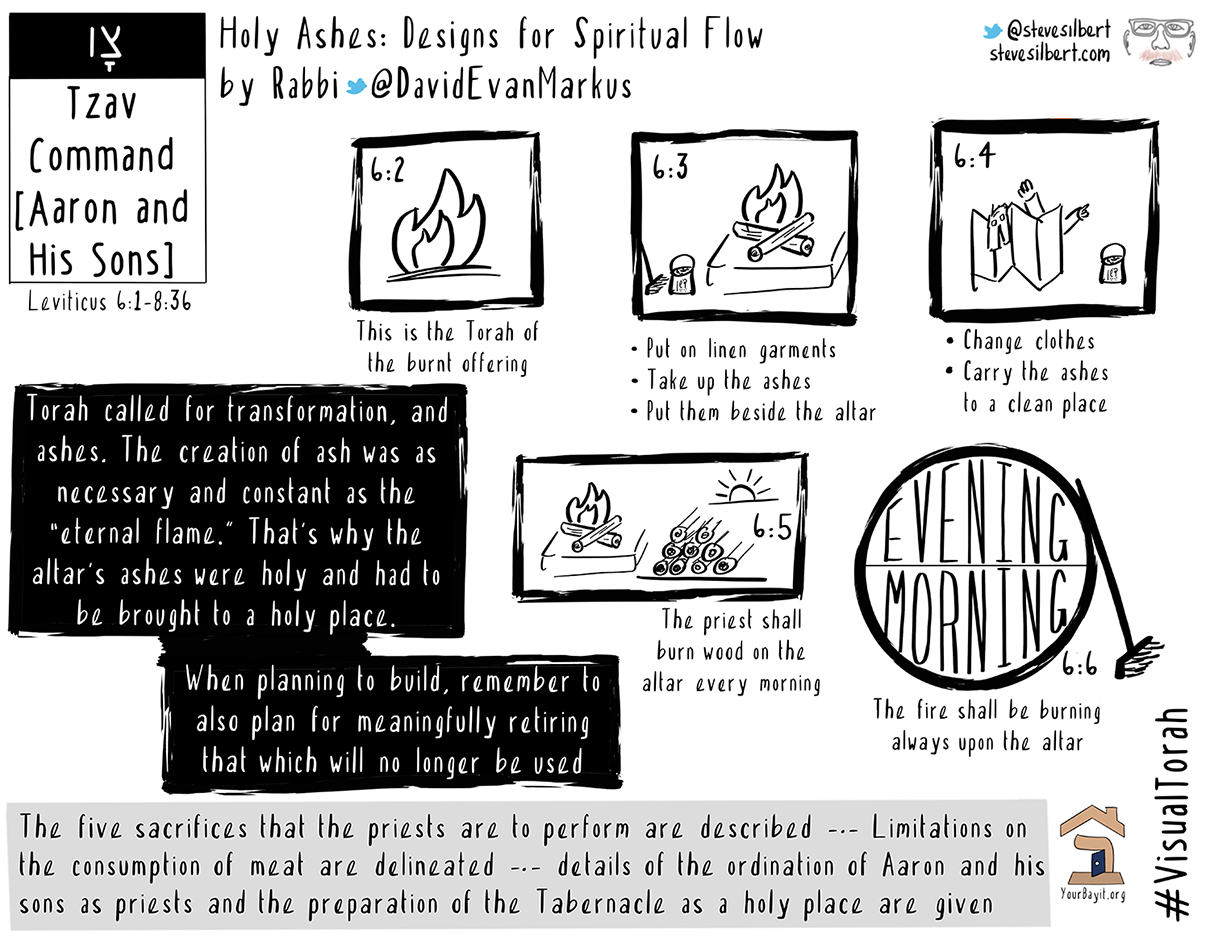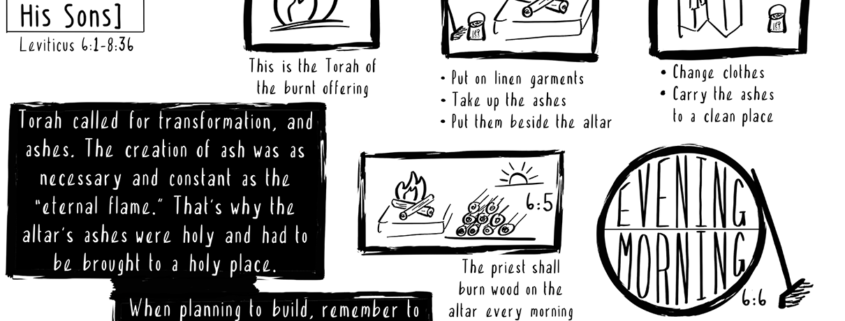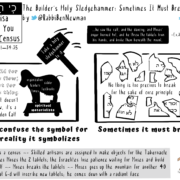Holy Ashes: Designs for Spiritual Flow

Part of a yearlong series of Torah wisdom on spiritual building and builders.
How well does a spiritual practice or spiritual community “work”? One answer from this week’s Torah portion (Tzav) may seem surprising: We gauge what works spiritually by the detritus it leaves behind from what it transforms. If there’s no detritus, we’re doing Jewish life wrong.

Spiritual life transforms people relative to themselves, community, things, the planet and the sacred. All transformation, in turn, leaves behind proof – discarded layers, ways and energies. A communal meal leaves crumbs and spills; a butterfly emerges from an expended chrysalis.
Because transformations create detritus, spiritually we must build for creating detritus, then moving it in sacred ways – and Torah teaches us how.
In Torah’s days, our spiritual ancestors used ritual sacrifices (korbanot) to draw close (l’karev) to holiness. Their practice was to burn foods on the altar’s “eternal flame,” transforming foodstuff to smoke that rose up. Creating smoke and scent would transform the spirit and invoke the sacred.
But what of the ashes that their burning left at the altar? Transformation meant ashes, but ashes piling up would block air from flowing: the “eternal flame” would burn out.
That’s why Torah designed for detritus. The altar was elevated to make space for air and ashes. Each day, the priest put the prior day’s ashes to the side, changed clothes, took the ashes to a “holy place,” returned, changed clothes again and proceeded with the day. Only that way could the “eternal flame” last and “never go out” (Lev. 6:2-6).
Torah called for transformation, and ashes. The creation of ash was as necessary and constant as the “eternal flame.” That’s why the altar’s ashes were holy and had to be brought to a holy place.

Torah’s lesson is eternal, even though we long ago grew past physical sacrifice as spiritual practice. It’s universal law – in spirit and in physics – that transformation must create byproduct: otherwise there’s no transformation. Thus, spiritually speaking, we must build for byproduct.
What’s the “ash” at today’s “altar”? Most simplistically, there’s the physical detritus that spiritual community leaves behind – literally, its garbage. We’re not used to seeing our garbage or our garbage collectors as sacred – but they are. Our custodians and clean-up crews are priests, and we must treat them as servants of the holy.
This lesson goes far beyond the physicality of things. We create spiritual “ash” in all that the heat and light of spiritual life transforms, and we must treat this ash as part of a sacred process.
Beliefs and spiritual practices evolve. They have to: otherwise we get stuck in past ways that no longer serve who we’re becoming. When beliefs and spiritual practices change, they leave inner ashes that we must be lovingly tend, lest they accumulate and block the flow of our own growth.

Opinions change. They have to: otherwise we grow blind to new information and changing circumstances. Tradition so valued evolving views that Talmud preserved so-called “minority” opinions in a holy place. After all, a “minority” view today might carry tomorrow. In the realm of mind, today’s “ash” might fertilize tomorrow’s bounty.
Leaders change. They have to: otherwise people and communities burn out. Even Moses couldn’t lead his people to their destination. Leadership must be cycled. Leaders who step forward must be treated as priests. Then the community must purge them of their past roles and cleanse the resulting “ash” so community can re-enfold them.

How should we build spiritually for the ash of these kinds of change? We must treat spiritual spaces like altars of transformation and their cleaners with visibility, respect and honorable pay. We must let beliefs and practices transform, training community members to welcome rather than push away these changes, and bring them to clergy and spiritual directors for refinement.
We must hold opinions gently, let them change and clean up after they do. We must structure leadership for shift: we must expect leadership situations to create ash and treat that ash as holy – without burning people up in the process.
The Sfat Emet (Yehudah Aryeh Lieb Alter, 1847-1905) taught that authentic spirituality cannot be separate from its ash but rather leads directly through it. Spiritual fire must create ash: we can’t rise spiritually unless we honor and lift the ash that spiritual life creates.
So build for spiritual life’s ashes. They are proof of doing spiritual life right. They are proof of a spiritual flame burning with alchemy’s heat and eternity’s light.


By Rabbi David Markus. Sketchnote by Steve Silbert.









